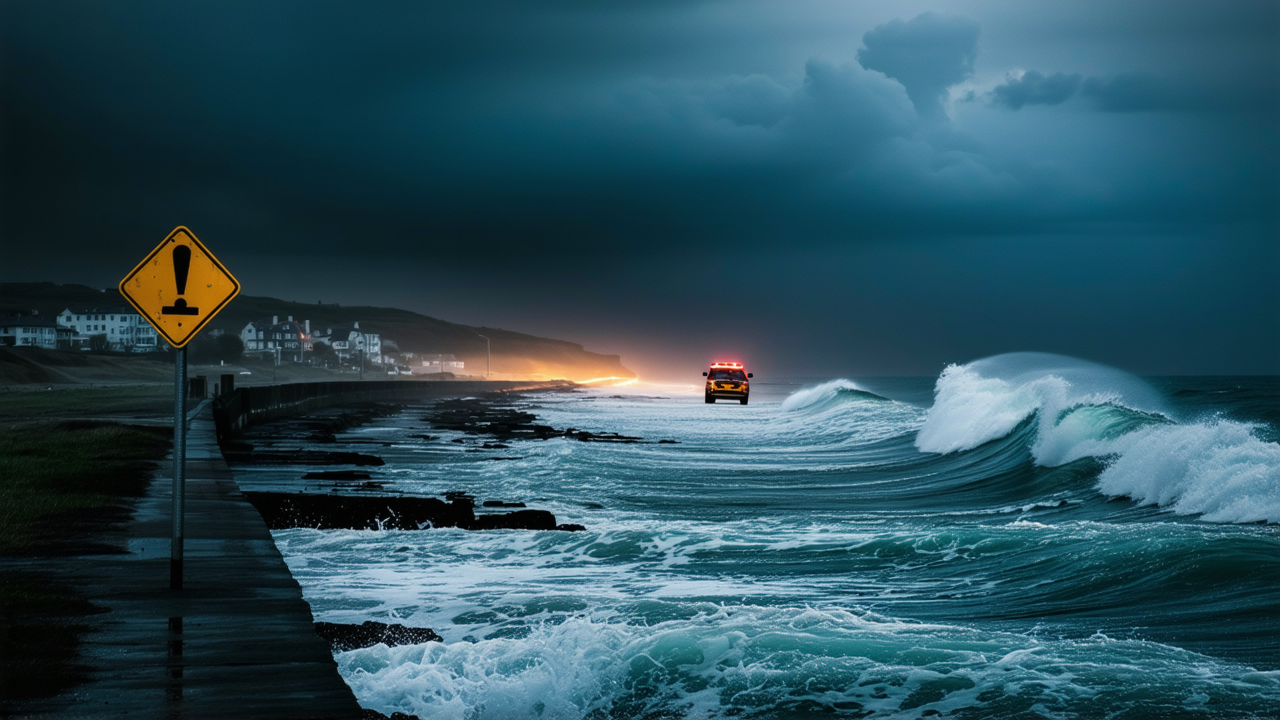New Zealand Coastlines Remain on Alert After Russia Earthquake Triggers Tsunami Warning
New Zealand Coastlines Remain on Alert After Russia Earthquake Triggers Tsunami Warning
New Zealanders have been urged to remain vigilant as strong and unusual currents and unpredictable surges continue to pose a threat along certain coastlines. This comes in the wake of a massive earthquake off the coast of Russia’s Far East, which triggered tsunami warnings across the Pacific Ocean. Despite the initial concerns, the situation has evolved, and the National Emergency Management Authority (Nema) has provided updates on the current status of the threat.
The earthquake, measuring 8.8 on the Richter scale, occurred on the Kamchatka Peninsula and was the sixth most powerful in recorded history. The tremor generated tsunami waves that reached as far as the Chatham Islands, with the largest wave recorded at 51cm. The first signs of the tsunami were detected at 1am on the North Cape tide gauge, prompting immediate warnings to coastal communities.
At 6:30am, a second tsunami warning was issued, advising people to stay away from the water. This warning was particularly significant as it came just hours after the initial alert. People on boats, live-aboards, and at marinas were instructed to leave their vessels and move to safer ground. The threat also extended to swimmers, surfers, and anyone near the shore, as unpredictable surges could occur without warning.
Although the risk has been reduced in some areas, the National Advisory remains in effect for the east coasts of both the North and South Islands, as well as the Chatham Islands. These areas are expected to remain under advisories overnight, with further updates to be provided at 8am the following day.
The impact of the tsunami was not limited to New Zealand. In Russia’s Kuril Islands, tsunami waves swept away buildings in the coastal town of Severo-Kurilsk, prompting a state of emergency. In Japan, waves reached Hokkaido, leading to the evacuation of over two million people and heightened concerns near the Fukushima nuclear plant. Other regions, including parts of Russia, Japan, Ecuador, and the northwestern Hawaiian islands, also received tsunami warnings, with waves of over 3 meters possible in some areas.
Meanwhile, the Klyuchevskoy volcano on the Kamchatka Peninsula erupted following the earthquake, according to Russian state news agency RIA. This adds another layer of complexity to the situation, as volcanic activity can also contribute to tsunamis and other natural disasters.
In New Zealand, the emergency alert system has come under scrutiny after some residents reported being woken by alerts between 1:50am and 3am. Emergency Management Minister Mark Mitchell defended the alerts, stating that they were necessary to prevent potential loss of life. He emphasized that the decision to use the national alert system was not taken lightly, as it is a critical tool for ensuring public safety in the face of natural disasters.
As the situation continues to develop, the focus remains on keeping the public informed and prepared. Authorities are urging coastal communities to remain vigilant and follow all safety guidelines. The ongoing threat serves as a reminder of the unpredictable nature of natural disasters and the importance of having robust emergency response systems in place.
For now, New Zealanders are being advised to stay away from the water and monitor updates from local authorities. With the situation still evolving, the next few hours and days will be crucial in determining the full extent of the impact.
